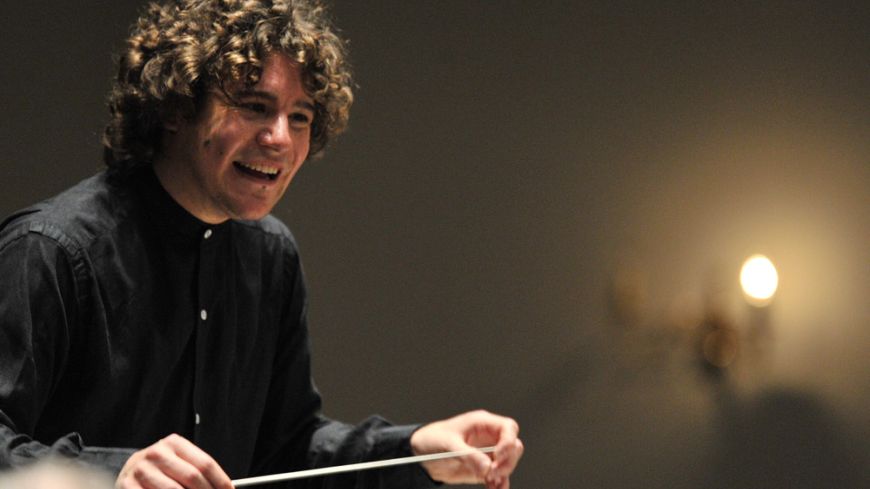
The Scottish Chamber Orchestra launched its new season last night at the Usher Hall with two works that complemented one another superbly. With Robin Ticciati at the helm – the Principal Conductor of the SCO - the first composition was the world premiere of Japanese composer Toshio Hosokawa’s Harp concerto – ‘Aeolus, Re-Turning 111 for Harp and Chamber Orchestra. The soloist was the exceptional Japanese harpist Naoko Yoshino, who has worked with Hosokawa for over twenty years.
A mystical, magical, composition Hosokawa wrote this work “with the mind-set that there is wind behind every sound produced and music formed from it.” [Indeed, the Aeolian harp is named after the Greek God of wind]. He is drawn to the ephemeral sounds a harp can create and is greatly influenced by nature and the Buddhist notion of the importance of silence of which there was much in this meditative composition. “The Harp represents man” he explains “and the orchestra represents nature and the universe surrounding it.” The work is profoundly atmospheric with superb dexterous playing by Yoshino, particularly in the cadenza where at times the sound of the harp was barely audible. Periodically the score juxtaposes bursts of full orchestration with shimmering strings – beautifully controlled by the musicians – and it concludes as it began with quivering strings dying out to beyond a whisper. It was quite beautiful.
Mahler’s Symphony No 4 in G was the second work. In four movements it was premiered in 1901 – an exciting revolutionary period in the arts when writers and musicians were pushing artistic boundaries. Mahler’s symphony is also mystical at times blending as it does themes of dreamlike spirituality and the inevitability of death. In the second movement the lead violinist changes her fiddle to another which is tuned a tone higher to exaggerate the dance of death. Beautifully executed she played with great passion to denote this turbulence in the score. Cellos begin the theme in the third movement, Ruhevoll [peacefully] which is then taken up by the strings then the brass section – all of whom played superbly. Indeed all of the musicians engaged wholeheartedly in the nuances of the music. The text in the final movement centres on “a child’s vision of paradise after death.” Hauntingly sung by the exceptional voice of mezzo soprano Karen Cargill, she evoked exquisite emotion from this moving text which revolves around heavenly angels. And as with the Hosokawa work the symphony concludes on a sublime, tranquil note.
Friday 10th October: 7.30pm Glasgow City Halls.

